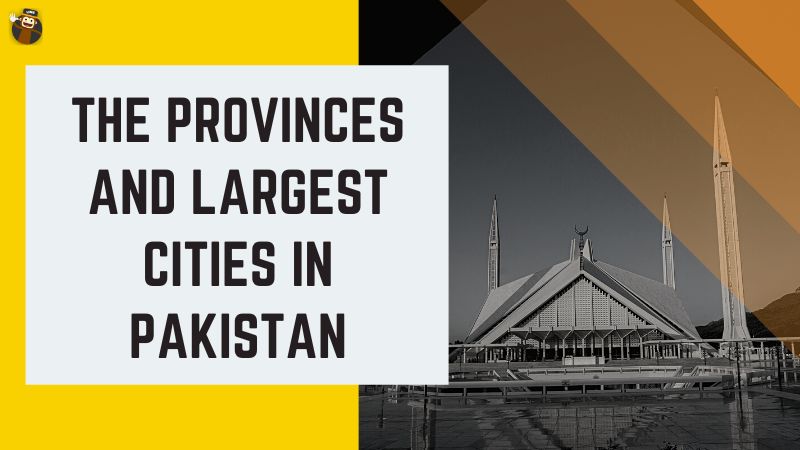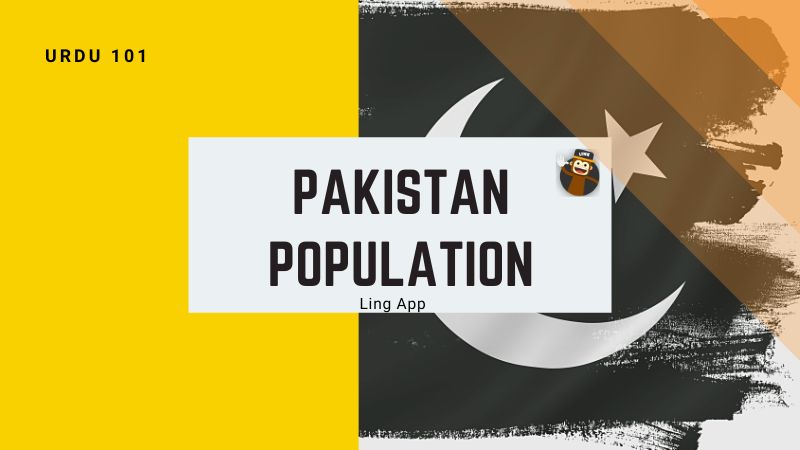The Pakistan population has taken leaps and bounds over the last few decades, just like its language: Urdu. It is a strength when handled correctly, but it puts the state under the weather when not treated ideally, which seems to be the case with Pakistan. We will break the ice for you and tell you that in this article as we will cover everything about Pakistan’s population growth with every province’s population growth rate, population change, and much more relevant information.
Census Of Pakistan Population
Based on the latest census this year, the total population of Pakistan is 229.5 million. This is why the country ranks fifth on the world population chart.
According to economists, this rate is due to the rapid rise in births and low deaths. More precisely, there has been a 2.4% population growth rate annually. The most common reason for this rapid increase in population is the urbanization and publicizing of the two cities, i.e., Karachi and Lahore, due to dramatic social changes like poverty, illiteracy, lawlessness, etc.
Total Fertility Rate
The urban population has trebled from 23.8 million to 75.7 million from 1981 to 2017. Moreover, the high fertility rate is also a critical cause of the population increase in Pakistan, and the state has one of the world’s youngest populations compared to other countries. According to recent research, 40.3% of people are under 15, while only 3.7 percent are above 65. However, the median age of the state was estimated as 19.
Population Density And Pakistan Area
According to the report of the World Bank collected in 2012, it is estimated that the population of Pakistan stood at 176,745,364 in 2011. However, this population was 142.5 million in 2001, and the country had the seventh position in terms of population in the world ranking. And it has increased by about 34 million people in ten years, which is considered highly rapid.
The Provinces And Largest Cities In Pakistan

- Sindh has 47.9 million people.
- There are 29.61 citizens living in Punjab.
- The population of Khyber Pakhtoon Khaw is calculated as 35 million people.
- Balochistan has 12.34 million people living there.
- Gilgit Baltistan has 883,799 people.
- Azad Kashmir has 4.24 million of the population living there.
According to the government of Pakistan and other population counting departments, ten cities in Pakistan have a population exceeding one million people, and two cities are considered the most populated cities of Pakistan, Karachi, and Lahore, having sheltered the majority of people; one has 14,916,456 citizens, and the other one has 11,126,285 respectively.
Faisalabad is the third most populated city in the country, having 3,204,726 people. While the other seven cities are Rawalpindi, Gujranwala, Peshawar, Multan, Hyderabad, Islamabad, and Quetta, having many people there. All these cities are written in population-increasing order, like Rawalpindi having the most and Quetta having the least in the row.
Statistics Of United Nations Population Divisions
The latest United Nations data and statistics or projections put together by the United Nations population division or economic or social affairs department estimated the countries having more than 90,000 inhabitants or less than this certain number and listed out critical information of different states. Pakistan’s data is given below:
- According to that data, the current population in millions in 2022 is 229.5
- The average annual population’s net change is 1.8%
- 34% of the people are children aged between 0-14 years.
- 30% of the population lies between 10-24 years of age.
- 61% of the total population lies between 15-64 years of age.
- Only 5% of the population is above 65 years of age.
- The real fertility rate per woman was 3.3%.
- Males’ life expectancy at birth was expected and calculated at 67%.
- Females’ life expectancy at birth was estimated at 69%.
Historical Record Of Pakistan Population By Year
The following points have data regarding population, growth rate, density, population rank, and density rank per year from 1955 till 2022.
Pakistan’s Population In 1960
- In 1960, there were 45,954,226 people in the country, and it was 12th in the world population. This population estimates that the growth rate in the year was 2.30% with a density of 59.61 square kilometers and was on the 97 density rank in the world.
Pakistan’s Population In 1970
- In 1965, the population increased from 45,954,226 to 51,841,626, and Pakistan secured 11th rank on the world population table. The growth rate in 1965 was 2.44% with a density of 67.23, and 92 was the density rank.
- In 1970, the population increased further and became 59,290,872 with the 10th population rank in the world with a growth rate of 2.72%; density was 76.91 and 91 on the world population density rank.
Pakistan’s Population In 1975 And 80
- In 1975, the population had increased and made it to the 10th number on the world population rank with 68,126,999 people in the state. The population growth observed in that specific year was 2.82%, with a density of 88.38 and a density rank was 86 on the world population density table.
- In 1980, the growth rate further increased from 2.82% to 3.43% and the population jumped from 68,126,999 people to 80,624,057. Pakistan had come one step below population rankings and landed on 9th rank with a density of 104.59 and a density rate of 78.
Pakistan’s Population In 1990 And 2022
- While this increase can be noticed in the state’s population, it was shocking that in 2022 the population has become 235,824,862 and is now in 5th rank on the world ranking chart with a density of 305.92 square kilometers and density rank of 43.
- It can be projected that Pakistan’s population will increase enormously and make it to the 4th rank on the world ranking table. It will get 483,738,203 with a density of 627.51 and a density rank of 22.
Wrapping Up

Ling App is a language learning app that solves the language problems of millions of people. It delivers lessons in more than sixty languages, including Italian, Korean, Chinese, Thai, and many more. Ling app has a very supportive environment for the learners and provides an informative mode of learning through flashcards, slides, and through taking quizzes. If you eagerly want to learn a new language, the only thing you should do is install the Ling App, choose a language, and you are ready to take yourself on the language-learning journey in your favorite language.
Download the app from Google Playstore or App Store and start learning the Urdu language.
Happy Learning!



































































